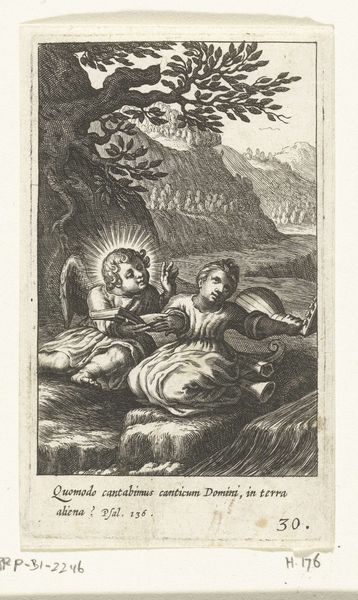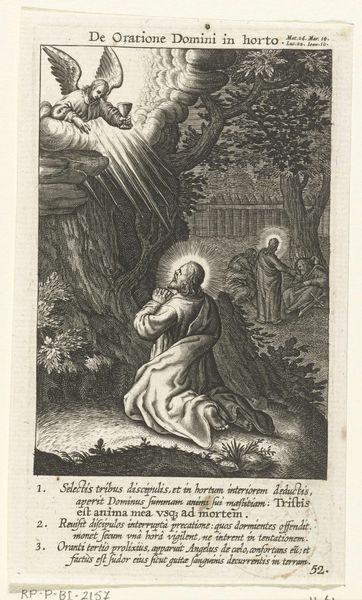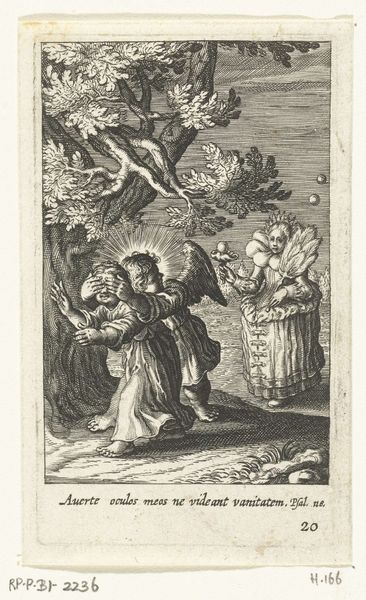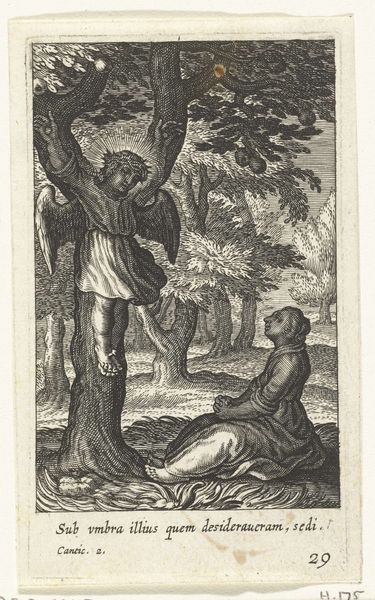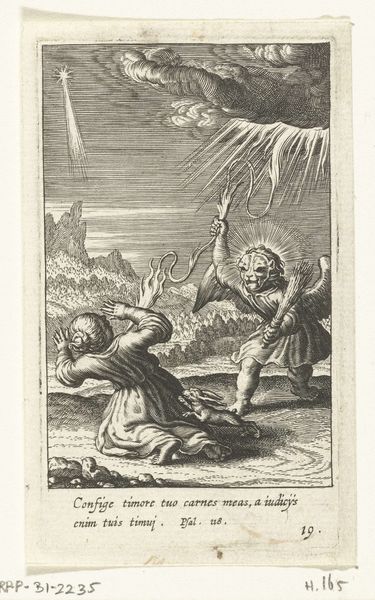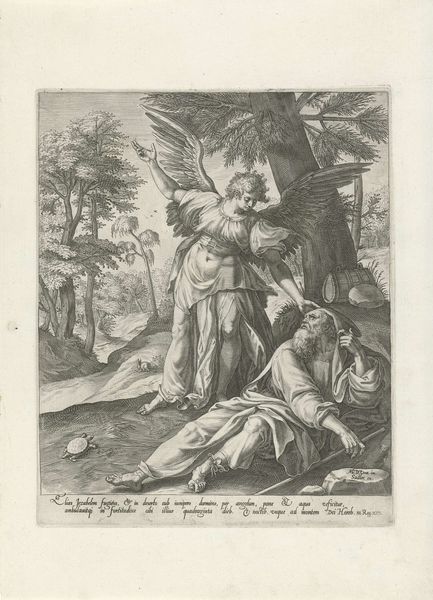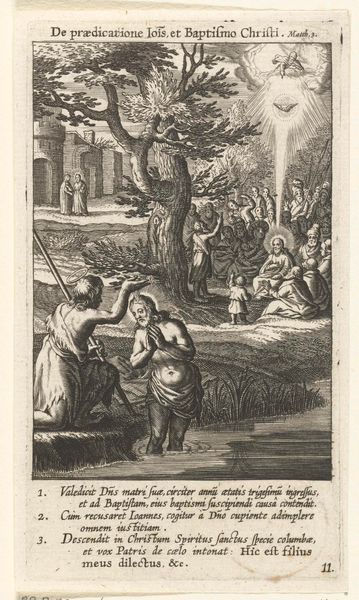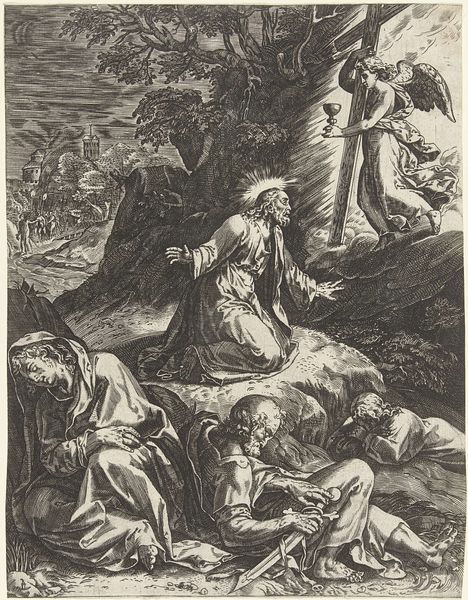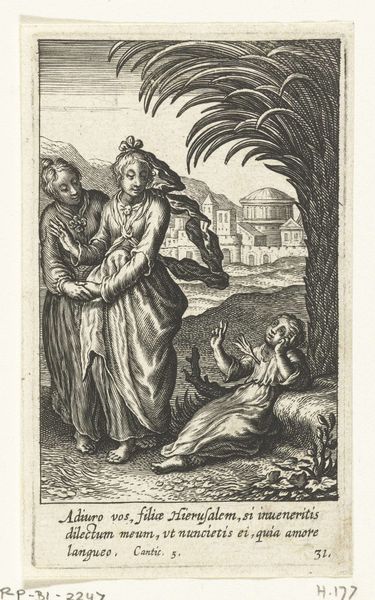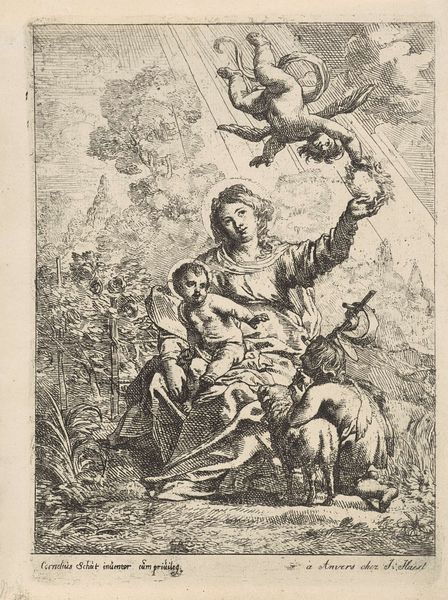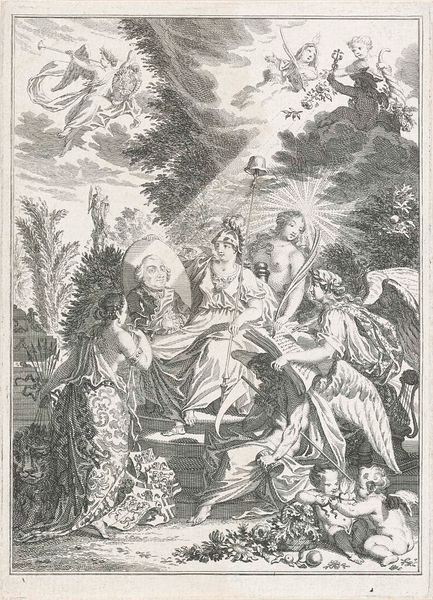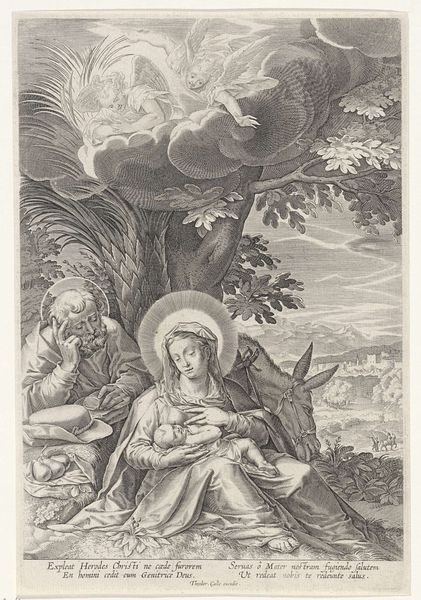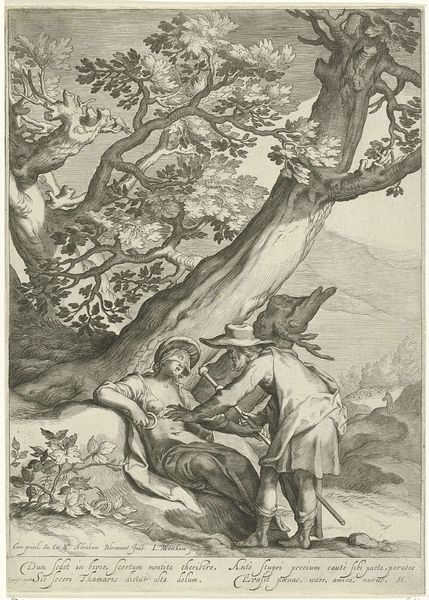
drawing, print, ink, engraving
#
drawing
#
baroque
# print
#
landscape
#
figuration
#
ink
#
engraving
Dimensions: height 95 mm, width 56 mm
Copyright: Rijks Museum: Open Domain
Curator: Here we have “Engel sluipt weg van slapend kind,” or “Angel Creeping Away from a Sleeping Child.” The engraving was created sometime between 1590 and 1624 by Boëtius Adamsz. Bolswert. It is an ink drawing in the baroque style. Editor: It's intriguing! The angel emerging from the luminous glow definitely contrasts with the more earthly details in the composition like the bare tree and sleeping figure, lending it a rather haunting yet delicate mood. Curator: It's worth noting that prints at this time served a very specific function as both art objects and a means of disseminating religious and political ideologies to a wider audience. I wonder if this image was created to support discourses about social inequities or ideas about religious otherness that may have been relevant at the time? Editor: Perhaps. When I view this piece, my initial reaction is thinking about the materials, the labor intensive process involved in engraving these fine lines in ink. Look at the amount of skill and artistry required to get such luminosity from a dark medium! I also wonder, with the Latin phrase and figure depicted, who this object was intended for in its time, as a devotional tool and an object of class power. Curator: Yes, thinking about that phrase… Fuge dilecte mi… it invites considering what the meaning may have been given who and where this artist and work existed at the time of production. How does the depicted landscape, its emptiness and serenity, speak to larger cultural understandings of displacement? What notions of spiritual seeking might it be meant to represent? Editor: Absolutely. What's also powerful for me is thinking beyond any allegorical interpretations to imagine what kind of press and inks would have been accessible to Bolswert, as well as any labor involved that might not be obviously visible when we’re presented with the end result, here on display in the museum today. Curator: The piece, on second thought, might allow us to also consider more subtle gendered or racial hierarchies. Given how accessible these engravings could be to a diverse viewership. Who was this art intended to address, uplift or perhaps even to silence or diminish through a prevailing social rhetoric? Editor: Reflecting on this piece further, I’m struck by how Bolswert’s method, that detailed handiwork, adds complexity, linking technique and context while opening avenues for understanding Baroque art and modes of print production as conduits for spreading cultural stories, regardless of what these narratives were. Curator: Indeed. What seems at first glance a simple Baroque image of religious symbolism turns out to offer so much more depth.
Comments
No comments
Be the first to comment and join the conversation on the ultimate creative platform.
